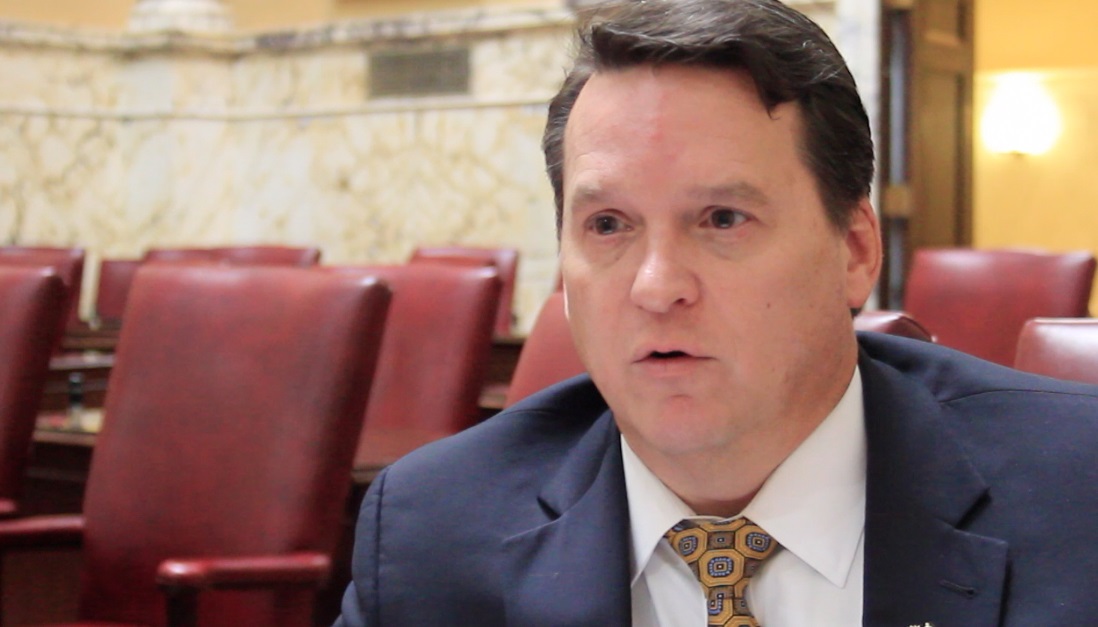Maryland Senate postpones vote on renewable energy veto
By Dan Menefee
For MarylandReporter.com
A Senate vote to increase the state’s Renewable Energy Portfolio Standard and override Gov. Larry Hogan’s veto from the 2016 session was postponed Thursday for a week.
The bill would mandate that 25 percent of all electricity consumption in the state come from renewable energy sources by the year 2020. The measure ups the renewable energy goal from the current 20 percent by 2022.
Senate Minority Whip Stephen Hershey (above) said the vote scheduled this Thursday came earlier than expected and was anticipated to take place only after the House took up the RPS veto next week.
“It was always an assumption and agreement that we were going to handle the RPS veto after the House acted on the bill,” Hershey, R- Queen Anne’s, said in an interview. “We needed to make sure we were prepared…and we weren’t able to get the information out to the entire caucus.”
The House on Tuesday special ordered the bill until Jan. 31, for the second time this session, in order to swear in new members filling recent vacancies and gather the 85 votes needed for an override.
Hershey said Senate President Mike Miller honored his commitment and “extended the courtesy to us today.”
A veto override requires 29 votes in the Senate and the 32-14 party line vote from last session is unlikely to be upended, Hershey admits.
“It’s a long shot,” Hershey said. “But we want to carry our message on behalf of ratepayers who will ultimately bear the costs.”
The bill has been hailed by climate activists and the renewable energy industry for clearing the way to add 1,300 megawatts to the state’s energy supply and 1,000 new solar jobs.
Environmental groups say the measure will save the equivalent of the energy used by nearly 600,000 cars Maryland.
“Maryland risks losing jobs and investment in energy sources like wind and solar if the Governor’s veto is permitted to stand,” said Tom Kiernan, CEO of the American Wind Energy Association. “Wind power already supports close to 500 jobs in Maryland and has attracted $380 million in private investment to date.”
Investment leaves Maryland
But Hershey, a long-time critic of the RPS, questions the investment being made in renewable energy infrastructure in Maryland.
“The $127 million that Maryland ratepayers spent in 2015 only went to buy renewable energy credits,” Hershey said. “That’s a traded commodity, very similar to a stock.” He said the credits simply account for renewable energy generation within the region.
Hershey cited a recent report from the Maryland Public Service Commission that revealed nearly 90% of the subsidies not attributed to solar went to out of state facilities.
“The credits are simply a rate payer subsidy for renewable energy, much of it not produced in Maryland,” Hershey said.
“If we want to go through with renewable energy and we want to support programs, let’s make sure we’re supporting programs that benefit Marylanders.”
In his veto last May, Hogan called the new energy targets a tax increase that was unnecessary and said under the current RPS “Maryland retains its status as a national leader in achieving RPS goals.”
“This legislation is a tax increase that will be levied upon every single electricity ratepayer in Maryland and, for that reason alone, I cannot allow it to become law,” Hogan wrote.
Hogan has called the new proposal a “sunshine tax.”

MarylandReporter.com is a daily news website produced by journalists committed to making state government as open, transparent, accountable and responsive as possible – in deed, not just in promise. We believe the people who pay for this government are entitled to have their money spent in an efficient and effective way, and that they are entitled to keep as much of their hard-earned dollars as they possibly can.

